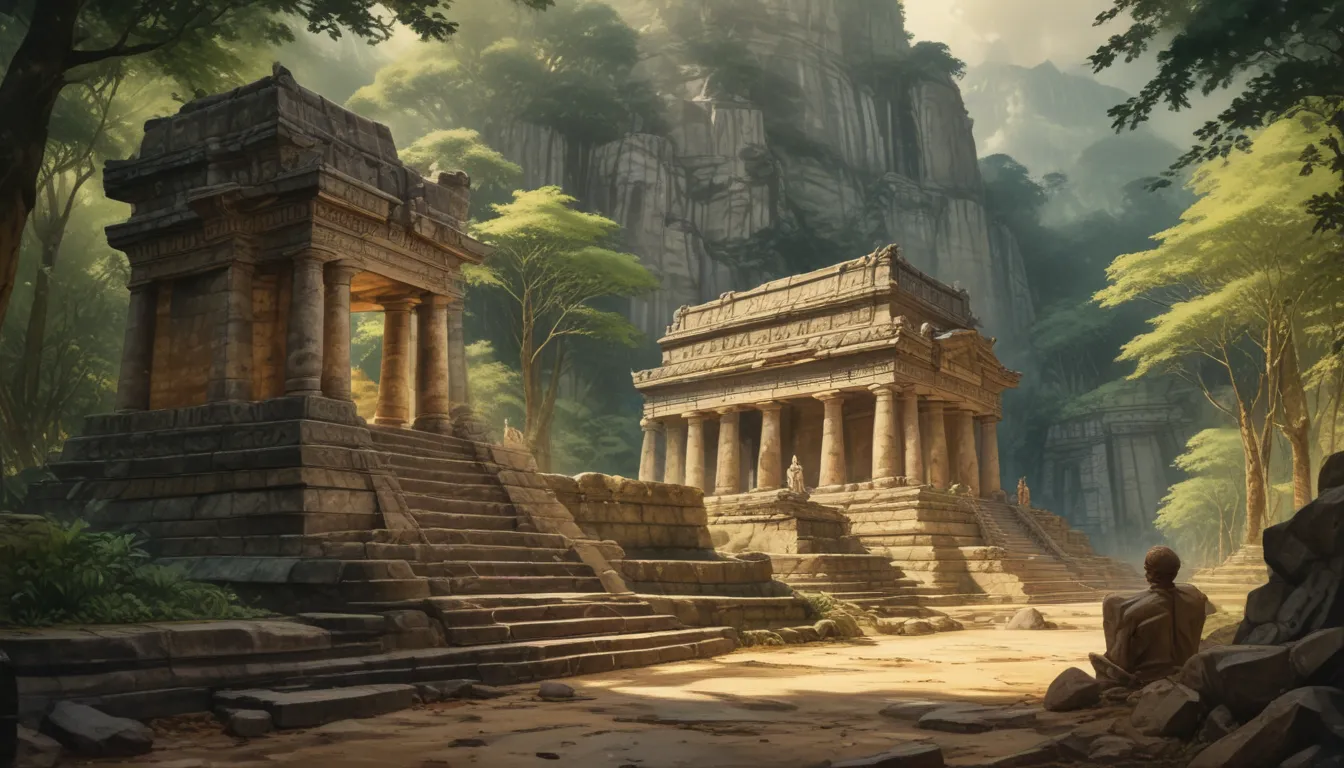The images in our articles are for illustrative purposes only and may not exactly match the content. They are intended to capture your interest and complement the text, not to replace it.
Welcome to the journey through time as we uncover the enigmatic wonders of the Temple of the Inscriptions in Palenque, Mexico. This awe-inspiring landmark, steeped in history and mystery, offers a glimpse into the ancient Maya civilization and their remarkable achievements. From intricate carvings to elaborate hieroglyphic inscriptions, this article will delve into 13 captivating facts about this fascinating temple, shedding light on its significance and the secrets it holds.
An Ancient Mayan Masterpiece
The Temple of the Inscriptions stands as an astonishing architectural marvel in the heart of the ancient Mayan city of Palenque, Mexico. This impressive temple complex, dating back to the 7th century AD, is widely regarded as one of the most important and fascinating archaeological sites in the world. Its intricate carvings and elaborate hieroglyphic inscriptions offer valuable insights into the religious, political, and social life of the ancient Maya civilization.
Extravagant Hieroglyphic Inscriptions
One of the most striking features of the Temple of the Inscriptions is its extensive hieroglyphic inscriptions that adorn the walls of the temple. These intricate carvings provide a window into the religious beliefs, political dynamics, and cultural practices of the ancient Mayans. Through these inscriptions, we can unravel the mysteries of a civilization that thrived centuries ago.
The Tomb of Pakal the Great
A significant discovery at the Temple of the Inscriptions was the crypt of the Mayan ruler Pakal the Great. This burial chamber, hidden beneath a stone slab, contained a treasure trove of artifacts, including jewelry, pottery, and jade masks. Among the treasures found in Pakal the Great’s tomb was a Copal incense burner, symbolizing the importance of religious ceremonies in Mayan culture.
Architectural Ingenuity and Astronomical Alignments
The Temple of the Inscriptions stands as a testament to the advanced engineering skills of the Mayans. The precision of the stone carvings, the intricate detailing, and the structural integrity of the temple showcase their architectural ingenuity. Moreover, the temple’s alignment with astronomical events such as the equinoxes and solstices highlights the Mayans’ deep understanding of celestial bodies and their significance in their culture.
The Temple of the Cross Group and Lord Pakal’s Ascension
The Temple of the Inscriptions is part of a larger complex known as the Temple of the Cross Group, which includes the Temple of the Cross and the Temple of the Sun. These interconnected temples, along with the central plaza, provide insights into the religious practices and political structures of the ancient Mayans. The hieroglyphic inscriptions found in the temple depict the story of Lord Pakal’s ascension to the throne, offering a fascinating glimpse into the power dynamics of the Mayan civilization.
Symbolism and Significance
Throughout the Temple of the Inscriptions, the imagery of the maize god is prevalent, symbolizing life and abundance in Mayan culture. The presence of elongated skulls within the temple hints at a tradition of cranial deformation associated with status and religious significance among the ancient Mayans. These symbols and practices shed light on the cultural beliefs and traditions that shaped the ancient Mayan civilization.
A Gateway to the Past
The Temple of the Inscriptions serves as a unique portal into the mysteries of the ancient Mayan civilization. Its inscriptions, artifacts, and architectural grandeur offer a glimpse into a fascinating chapter of human history. Whether you are a history enthusiast, an archaeology buff, or simply curious about exploring ancient cultures, the Temple of the Inscriptions is a must-visit destination that will leave you in awe of the achievements of the Mayan civilization.
Conclusion
In conclusion, the Temple of the Inscriptions in Palenque, Mexico, stands as a testament to the advanced knowledge and cultural richness of the ancient Maya civilization. From its extravagant hieroglyphic inscriptions to the tomb of Pakal the Great, this sacred site preserves the legacy of a remarkable civilization that thrived centuries ago. Whether you are intrigued by archaeology, history, or cultural heritage, a visit to the Temple of the Inscriptions promises a journey through time that will enrich your understanding of the past.
FAQs
Q: How old is the Temple of the Inscriptions?
A: The Temple of the Inscriptions dates back to the 7th century AD, making it over 1,300 years old.
Q: What is the significance of the hieroglyphs found in the temple?
A: The hieroglyphs found in the temple provide valuable insights into the history, religion, and politics of the ancient Mayan civilization.
Q: Can visitors explore the interior of the temple?
A: No, the interior of the temple is not open to the public to preserve its historical integrity. However, guided tours offer a comprehensive view of the exterior and its significance.
Q: Is there an entrance fee to visit the Temple of the Inscriptions?
A: Yes, there is an entrance fee to access the Temple of the Inscriptions, which may vary depending on location and additional attractions within the site.
Q: Are there accommodations near the temple?
A: Yes, there are several hotels and accommodations available near the Temple of the Inscriptions, offering a range of options for visitors.
Q: Can I take photographs inside the temple complex?
A: Photography is generally allowed in the temple complex, but it is recommended to check with the staff or guides on-site for any restrictions.
Explore the mysteries and wonders of the Temple of the Inscriptions in Palenque, Mexico, where history, culture, and ancient wisdom converge to offer a captivating journey through time. Embrace the legacy of the ancient Mayan civilization as you unravel the secrets of this architectural marvel, preserving the stories of a remarkable civilization for generations to come.






